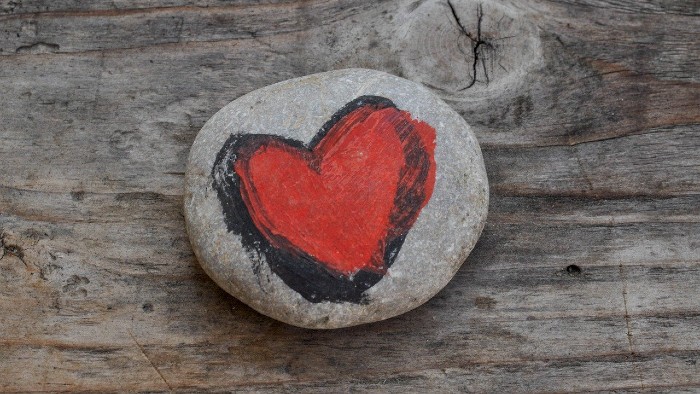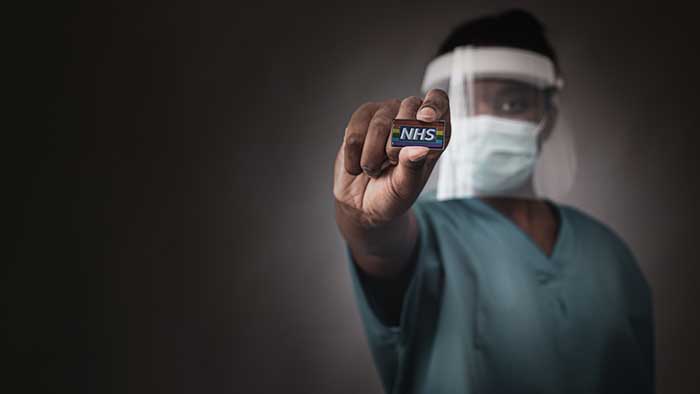It is true that folklore helps us learn about our ancestors and their lives. As we continue to mark Armistice Day with a two-minute silence, we understand the momentousness of the end of the first world war. In some parts of England, the restoration of the monarchy in 1660 is still celebrated as Oak Apple Day.
But it’s not all about the past. In response to Taylor Swift’s new album (also entitled “folklore”), the American Folklore Society created a resource to demonstrate just how contemporary folklore is. It says that, despite its dusty connotations, folklore is the knowledge of the people “displayed through expressive culture”.
I have been tracking how people are expressing beliefs and values using folkloric practices today. It seems that during these dark times they are being used to visibly brighten our communities. Many of us will have perpetuated these customs simply for something to do – particularly families desperate for ideas to occupy children.
So here are five folkloric customs that could come to define this age in the future.
1. Window displays
Writing in the latest newsletter from The Folklore Society, lecturer in history and folklore, Ceri Houlbrook observed that “ritual deposits are placed in private spaces but for public consumption, and symbols are adopted, such as the rainbow, to express hope and support”. For many of us, spotting window displays during our limited exercise became a rite in itself.
The rainbow has long been used as a symbol of hope and unity. The child-created window displays are thought to have originated in Italy – the first European country to experience tough lockdown measures. Accompanied by messages of gratitude towards the NHS, these displays demonstrated children’s ability to contribute to the wider pandemic conversation.
2. Scarecrows
Community scarecrow festivals are common in the UK and the idea was borrowed for domestic lockdown displays. Photographer of British folklore, Sara Hannant, says scarecrows are “guardians of the harvest”.
In lockdown, the scarecrow was often seen dressed up as a key worker in tribute. But their position is not always positive and they can sometimes frighten humans as well as birds. Some of the scarier scarecrows seen during lockdown were, in fact, effigies created to pillory politicians.
3. Painted pebbles, stone snakes
Another pre-COVID custom, the hiding and seeking of painted pebbles to amuse children and to forge connections in the community, also became an integral part of community folklore. Passing on knowledge – anonymously and creatively – was made possible through messages of reassurance painted on pebbles and displayed outside homes, at community focal points or hidden for others to find.
Stones have long had pandemic connotations. The “Boundary Stone” for example was where isolated villagers in Eyam, Derbyshire, left money and received food during the 1665 plague.
During lockdown, pebble painters also created stone snakes. Some were created organically by leaving pebbles in a line to encourage others to add theirs. But others were more organised, such as the long “COVID snake” created at Pavilion Gardens in Buxton, Derbyshire.
4. Kerbside gifts
Painted pebbles were not the only lockdown gifts. With more time at home and in the neighbourhood, residents took the opportunity to weed out unwanted belongings and, with charity shops and recycling centres closed, left freebies for passers-by. Some made the clear-out more appealing and fun. In one street in Nottingham (pictured above) a resident wrapped up the books, CDs and DVDs she was giving away to treat her neighbours to a lucky dip.
Small tokens or notes of inspiration were also left as inspiring gifts for passers-by in some parts of the UK. For example, in Mapperley, Nottingham, quotes were pinned to trees in an attempt to spread positivity. These displays supplied crowd-sourced distractions while providing reassurance and solidarity for both purveyor and reader.
5. Doorstep noise
The Guardian deemed Clap for Carers the “unBritish ritual” due to its loud, proud demonstration being uncharacteristic for famously reserved Brits. But for 10 weeks, 8pm on Thursdays was a raucous affair with people applauding keyworkers on their doorsteps. In some neighbourhoods, this was augmented by fireworks, car horns, pots and pans and – in some cases – a prompt for socially distanced community celebration.
Residents of Belper, Derbyshire, took the noise-making further, turning out at 6.30pm each lockdown evening to moo for two minutes. Begun by Jasper Ward to “fight lockdown loneliness and boredom”, the moo has been replicated across the world. Like Clap for Carers, there are plans for an annual commemoration beginning in 2021. Weekly doorstep racket-making, it seemed, became a cathartic method to remind ourselves of the people beyond our four walls.
As lockdown curtailed social interactions, these COVID customs enabled people to make connections and demonstrate meaning. A rainbow in a window can be both a child’s delightful creation and a signal of hope. Participation in Clap for Carers a statement of solidarity and a simple acknowledgement of thanks.
Folklore researcher at the Elphinstone Institute, Nicolas Le Bigre, who is documenting COVID customs as part of “Lockdown Lore” says it is too early to say whether these communal acts will re-emerge in other periods of global crisis, or whether they will retire, becoming symbols of the time. But he added: “I can at least smile at the wealth of creativity that has come my way.” And that has been a comfort to us all.
The V&A, Museums Sheffield and the Centre for Contemporary Legend at Sheffield Hallam University are collecting COVID customs for future analysis of what they say about this turbulent period.
This article was originally published on The Conversation.



